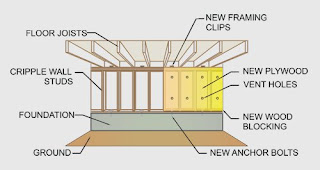
According to The State of the Nation's Housing 2015 report published by Harvard University, "Up to 1 million households who lost their homes to foreclosure have already restored their credit standing, making them again eligible for FHA and other mortgages, and 1.5 million more could do so shortly."
Return buyers are coming back into the market, and will continue to do so, but one of the problems is, many buyers out of the millions who were foreclosed upon between 2008 and 2014 are not aware of the guidelines under which they may repurchase. Plus, many buyers are under the impression that all purchases for owner occupied mortgages require a 20% down purchase. This is not a mandatory requirement but depends on which kind of loan being applied for, and how long it's been since the negative event was concluded in the past. Briefly, FHA loans allow for a minimum of 3.5% down, VA has similar program, and conventional loans may be 5%-10% down and offer different interest rates and scenarios for the buyer. Twenty percent down loans are great to have, but many people cannot meet that level, so please understand there are
other options.
A lot of buyers who suffered a financial hardship in the past
are genuinely surprised when they realize that the FHA or VA loan allows them to purchase again after just 1-3 years, depending on circumstances. Let’s take a
look at the 2016 mortgage waiting periods:
AFTER FORECLOSURE:
Conventional loan: Close of escrow, meaning new loan date, must be 7 years from foreclosure date. And, under a new rule,
if you included the foreclosure in a bankruptcy, you can qualify after 4 years instead of 7 years. Contact your lender for more details on how to qualify under this new rule.
FHA It is 3 years
before you can repurchase again using FHA financing. Contact your lender to find out how you may quality after just one year (this means meeting "special circumstances" which fewer borrowers will be able to meet).
VA. It is only 2 years before you can repurchase again using VA financing.
AFTER A SHORT SALE:
Conventional. It
is 4 years before you can repurchase again using Conventional
financing.
New Rule: There was a new change implemented recently (see below), whereby
if you included the short sale in a bankruptcy 13, you can qualify after 2 years instead of 4 years.
FHA. It is 3
years before a buyer can repurchase again using FHA financing. But there
are 2 less commonly used ways to help you qualify in less than 3 years if you can meet them under suffering an "economic event" as defined by FHA. Contact your lender for more information on this, but be aware that
showing loss of income and other events must be documented and approved in the loan.
VA. It is only 2 years you can repurchase again using VA financing.
AFTER BANKRUPTCY:
Here are the current 2016 waiting periods when you can purchase or refinance again after a
Bankruptcy and want to obtain either Conventional, FHA or VA financing.
Conventional.
For a chapter 7 Bankruptcy it is 4 years and 2 years for a chapter 13
bankruptcy, before you can repurchase again using Conventional
financing.
FHA. For a
chapter 7 Bankruptcy it is 2 years and 1 year for a chapter 13, before
you can repurchase again using FHA financing. Or, see above for how you
can qualify again after just 1 year if you experienced an economic
event.
VA. For a
chapter 7 Bankruptcy it is 2 years, and 1 year for a chapter 13
bankruptcy, before you can repurchase again using VA financing.
Another option if you want an alternative to these guidelines, is a portfolio lender (a loan that is not re-sold on the market after close of escrow), which may be an option, but there may be higher loan rates.
To find out your eligibility, I can help you with finding resources to doublecheck on dates,
so please contact me, or, contact a lender if you know one who is well-versed in these guidelines, to find out your eligibility for a mortgage.















